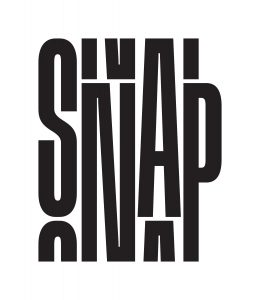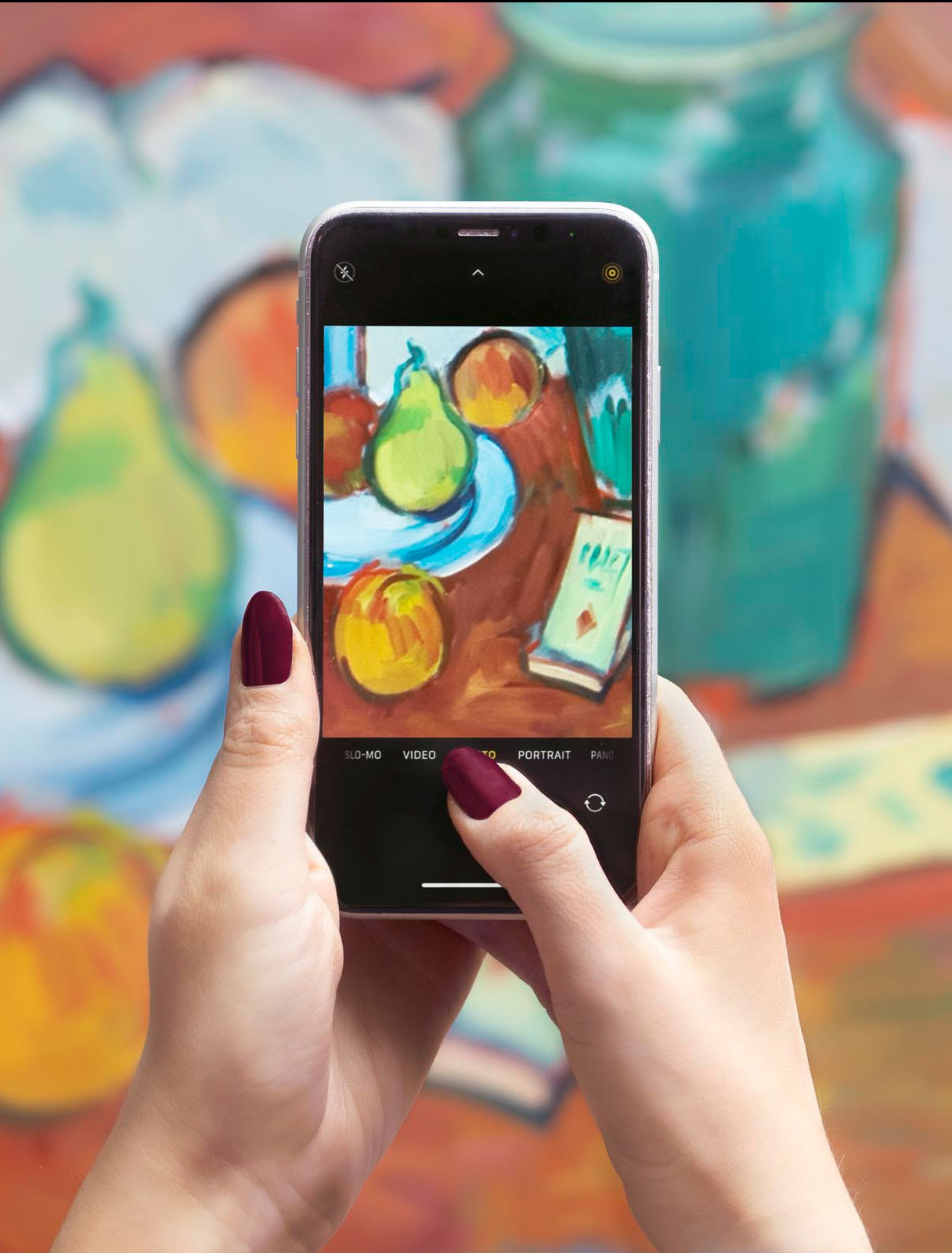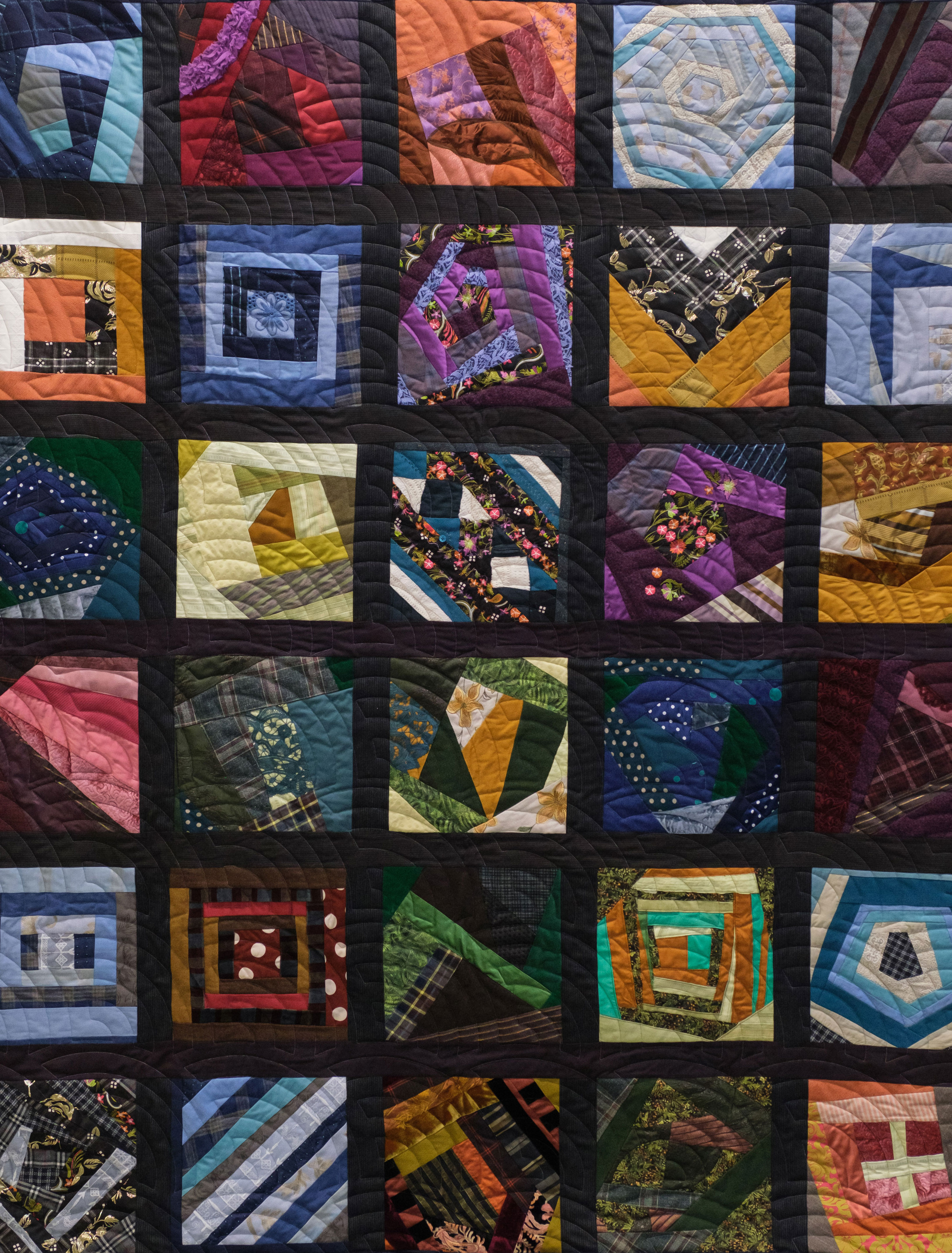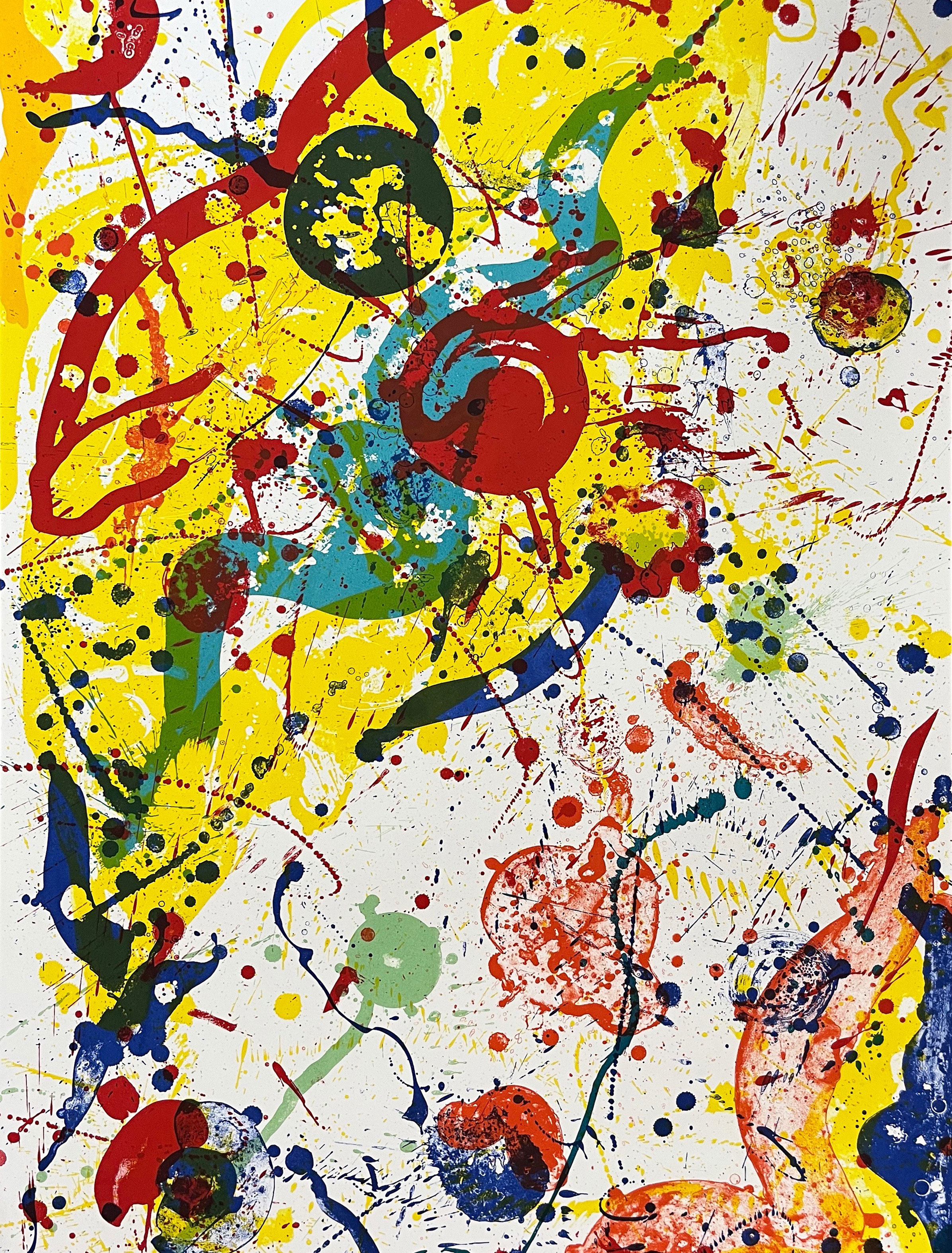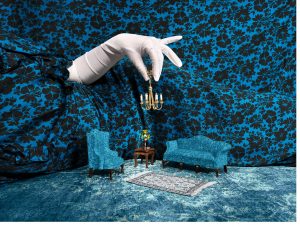
WINNER: Jim P. Shea Award for Best Overall Submission
36 ins x 27 ins; 91.4 cms x 68.6 cms
Estimate $1,000-$2,500
Waddington’s is proud to partner with the AIDS Committee of Toronto (ACT) to present the SNAP Photography Auction online from March 11-18, 2022.
The auction represents the winners and jury selections from the annual Photo Competition. These contemporary, lens-based works are selected from hundreds of entries by a blind jury of talented professionals working in the fields of photography, printing and framing.
The winning photograph, The Living Room, was made by Allison Morris. Toronto-based Morris has exhibited internationally in Florence, Rome, Belgrade, Sardinia, and Anchorage. She received a Bachelor of Fine Arts in Photography at the Ontario College of Art and Design University, and spent her third year of study abroad as part of OCAD University’s Off-Campus Florence program in Italy. In 2019 she participated in her first artist residency in Sardinia and has had her work featured in numerous publications including The Huffington Post.
We caught up with Morris via email to ask about her influences, her views on phone photography, and what makes a good picture.
Tell us about The Living Room, your winning photograph.
This photograph is part of an ongoing project that I’ve had in the back of my mind for a while. In the midst of the pandemic, I started to feel as though the line between myself and the furniture within my apartment was becoming increasingly blurred.
Historically, the domestic space is deeply entangled with the feminine experience. It is a space that is representative of many of the expectations, roles, and responsibilities that can fall upon us. That being said, I’m also privileged to have a private space where I can be free of any gaze and simply, safely, exist. With the added weight of the pandemic, it became more obvious to me how these two opposing concepts of home clash.
This photograph was a way of visualizing this experience. I wanted to create an image depicting my body as the very walls of a typical room in a home. But it is up to the viewer to decide if the body is being consumed by the space, or rather creating a space of its own. It plays on this dual nature of confinement and security.
Have your feelings changed towards it as time has passed as compared to when it was taken?
This is an interesting question for this specific body of work and this piece in particular, since it came to fruition in the real depths of the pandemic. I think overall, my thoughts haven’t changed, but this is because of the nature of the duality itself. What I mean is that, despite the pandemic inspiring this photograph, domestic space will always have this tension between seeming both confining and safe. I should add that the concept of the home, and the history of women’s relation to it, was something I was thinking about prior to the pandemic. It was the subsequent lockdowns that played an important illuminating and motivating role for me to finally put those ideas to work.
Describe your style—both aesthetic and the way you work.
Aesthetically, I would describe my work as sickeningly sweet. In terms of ‘sweet,’ I take a lot of inspiration from objects, textiles, and colour palettes that are considered traditionally feminine. You’ll notice a lot of florals, bold colours you would find in advertisements, and references to costume or performance. As for my work having a kind of ‘sickening’ aspect to it, this can be seen in how I try to exaggerate these ‘feminine’ aesthetics to demonstrate how unnatural and restricting they can be.
All of my work is self-portraiture. Typically, my process is a balancing act between revealing myself, but also strategically hiding or concealing myself. In this way, I maintain a sense of control over what the viewer sees and doesn’t see. But self-portraiture has another function, which is to convey as best as I can my authentic self, that is, my experience of, and ideas about, something.
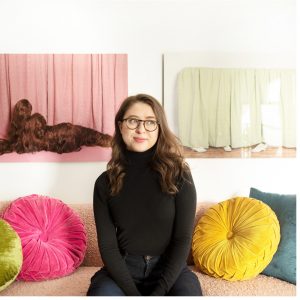
Do you have a favourite artist or artwork?
I’m not sure I could pick a single favourite artist, but for this series in particular, I keep going back to the work of Louise Bourgeois and her Femmes-Maisons, Francesca Woodman’s self-portraits, and Carrie Mae Weems Kitchen Table series, amongst others. These are all artists who were exploring the relationship between their bodies, their identities, and the domestic space.
I’ve also loved reading the works of Carmen Maria Machado, Sheila Heti, and Charlotte Perkins Gilman’s short story The Yellow Wallpaper, which was a huge inspiration for this project. These works all reference classic horror literary elements and themes of domestic spaces to explore its relation to the female identity and body.
What does a typical day look like for you? Has the pandemic changed the rhythms of your work or made you think about what you make in a different way?
The pandemic really forced me to change the way I work. One of my favourite things is rifling through flea markets, thrift shops, and antique stores, and coming across an object or piece of clothing by chance that immediately triggers a concept for an image. With the pandemic, my photographs need to be a lot more planned out ahead of time. Once I have a concept in mind, I’m making detailed sketches and lists of what I’m going to need to make the photograph a reality. I’ve also had to be more creative with finding the space to shoot, which currently means pushing the furniture from one room of my apartment to the other. My work and living space have completely collided. And yes, ironically this image was created in my own living room. These conditions only further emphasized the need for me to create a body of work around this phenomenon, that is, the less obvious lines between the individual and space or the feeling of the two collapsing into one another. In this way, my life, my artistic practice, and my photographs themselves all coalesced around the pandemic in interesting ways.
Was this your first time submitting to SNAP? How did you hear about the competition?
This was my first time submitting to SNAP, and I’m so glad I did! Through Instagram I’ve followed along and seen so many amazing artists that have participated in previous years, and it was such a great opportunity to be able to contribute to an event that supports both artists and ACT Toronto, an organization helping those at high risk or living with HIV and AIDS, as well as the stigma that surrounds it.
How did you learn about photography? What was your trajectory as a photographer?
My dad and my older brother were avid photographers when I was growing up. There was always a camera lying around during family get-togethers or holidays and it always piqued my interest. When I was 16, I got my very first camera. The moment I took it out of the box I remember running up to my room, closing the door, and taking my first self portrait, which was a long exposure using a little flashlight to trace my silhouette. This is interesting both because self-portraiture became so central to my practice to this day, but also this moment was perhaps indicative of the intimacy and importance I attribute to self-portraiture. Before getting a camera, I was also interested in painting and drawing. I still see these art forms as informing my own work, not only in my research and inspiration for images, but also in the fact that sketching is part of my process in creating a photograph.
In a moment where everyone is able to take a “professional” looking photo on their phone, where do you think photography as a medium is headed?
Phones have made photography more accessible and less intimidating to a lot of people. I love this aspect of phone photography, and how it has created a slightly more even playing field. I see artists creating incredible images regularly with their phone cameras, and it further proves that your camera and equipment are not the most important things behind making powerful images. Importantly, its accessibility has played a political function in allowing people to capture injustices for the world to see and respond to.
I also love the agency that phones can offer its owner. We’re living through a turning point where people are suddenly able to represent themselves online on their own terms. But because of this, it’s also much easier for people to depict a distorted version of reality that can set unreasonable and frankly toxic standards. In this way, phone photography has the potential to both show us a rich diversity of creative perspectives and even draw attention to important political problems, but, without critical reflection, can also contribute to or reproduce the harmful standards that my work seeks to resist.
What is your earliest memory of art? Did you always know that this was the path for you?
I can’t recall my earliest memory of art, but I remember always knowing that being an artist was the path I was working towards. There was a formative moment during my undergraduate studies that really encouraged me to continue on the route that my practice was heading, and that was seeing the AGO’s Introducing Suzy Lake show in 2014. It was incredible to see the breadth and depth of her work in a single exhibition and it really pushed me to continue working on feminist issues through self-portraiture and photography.
What makes a good picture? Has your answer changed over the years?
I think this is mostly a matter of taste and what speaks to the viewer the most. In terms of what I look for in a lot of art, it’s that the concept and its visual execution are in a kind of harmony; that the concept isn’t expressed in a heavy-handed or obvious way, and that the piece is intimately connected in such a way that allows the viewer to experience it for themselves.
ABOUT THE AIDS COMMITTEE OF TORONTO (ACT)
Proceeds from this auction will support the free programs and services offered at ACT, Canada’s largest HIV and AIDS service organization. ACT was founded in 1983 by a group of community volunteers with the mission to end AIDS in Toronto through sexual health education, prevention and outreach. ACT works towards a city with zero new HIV infections, zero HIV-related stigma and discrimination, and zero AIDS-related deaths while promoting the independence, dignity, health and well-being of those living with HIV and AIDS and those at increased risk of HIV. ACT primarily serves gay, bi, queer people living with HIV and those at increased risk for new HIV-infection. They offer counselling and support groups, social support programs and anonymous HIV-testing. ACT also offers programming for young people, women, and has a one-of-a-kind employment program to help people living with HIV and LGBTQ2+ folks find meaningful employment in their field after taking time to focus on their health. To learn more, please visit ACT’s website at actoronto.org.
ABOUT THE AUCTION
Please view the full online gallery for the auction. The sale of all the artworks in this auction support the important work that ACT does in our community.
Click here to find out how to register for the auction, and to review the auction’s specific Terms & Conditions.
SUPPORT ACT
It is our hope that new audiences will participate in the SNAP online auction so as to better help support ACT’s important work.
For more information, we invite you visit SNAP’s website or contact Matt O’Donnell at [email protected].
SNAP would like to thank its partners, including the TD Ready Commitment, Toronto Image Works, Print Partner, museumpros, TPH, Air Canada, Inspired Media, Akasha Art Projects, Dimensions Custom Framing & Gallery, and Waddington’s.



